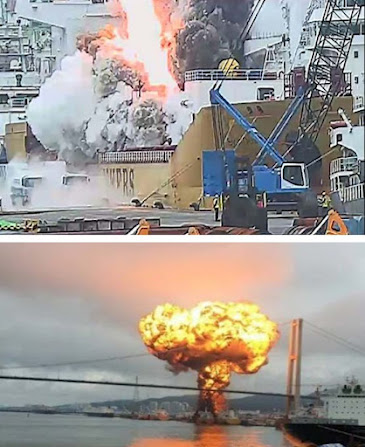Today's KNOWLEDGE Share:
Runaway Polymerisation
Polymerisation is a chemical reaction, or process in which a monomer or a mixture of monomers is converted into a polymer such as polystyrene. Styrene polymerises slowly at normal ambient temperatures but very rapidly at elevated temperatures. It can be accelerated by heat, the lack of dissolved oxygen, the lack of a polymerisation inhibitor, and when contaminated by oxidising agents and most halides.
The polymerisation process is exothermic and, if the resulting heat is not removed, the bulk styrene temperature may rise to a level at which polymerisation is self-sustaining and very rapid. This is referred to as ‘runaway polymerisation’ and will usually be initiated by temperatures above 65°C. During a runaway polymerisation, the cargo will expand causing pressure to increase to the point
that vapour is released from tank vents or p/v valves. In some cases, the resulting build-up of pressure is sufficient to rupture the tank.
Case Study
On 28 September 2019, a cargo tank containing styrene monomer on board the Cayman Islands registered chemical tanker Stolt Groenland ruptured causing an explosion and fire. The ignition of the styrene monomer vapour resulted in a fireball. The rupture of the styrene monomer tank resulted from a runaway polymerisation that was initiated by elevated temperatures caused by heat transfer from other chemical cargoes.
The elevated temperatures caused the inhibitor, added to prevent the chemical’s polymerisation during the voyage, to deplete more rapidly than expected. Although the styrene monomer had not been stowed directly adjacent to heated cargo, the potential for heat transfer through intermediate tanks was not fully appreciated or assessed.
The tanker’s crew did not monitor the temperature of the styrene monomer during the voyage, and therefore were not aware of the increasingly dangerous situation.
What Went Wrong?
1-) The probability of heat being transferred from the other cargo tanks to the styrene monomer cargo was not fully considered during the planning and approval of the cargo stowage.
2-)Despite being a requirement in rules, the temperature of the styrene monomer was not monitored, and the temperature alarms available on the cargo monitoring system were not set. The crew also either did not notice, or did not recognise the significance of, the elevated temperatures of the cargoes discharged.
3-)The actions to be taken on encountering elevated temperatures in the styrene monomer cargo on board , which were stated on the procedure of inhibitor, were not done.
Source: Report on the investigation of the cargo tank explosion and fire on board the chemical tanker Stolt Groenland Ulsan, Republic of Korea 28 September 2019
Credits:Onur Ozutku
Follow: http://polymerguru.blogspot.com
#Polymerization #safety #fire #explosion #chemical #monitoring #runawayreaction #tanker #casestudy #riskassessment #vessel #cargo





No comments:
Post a Comment